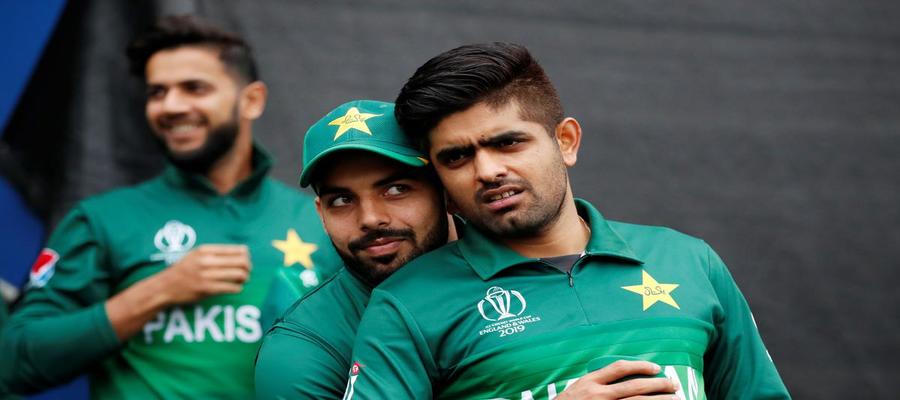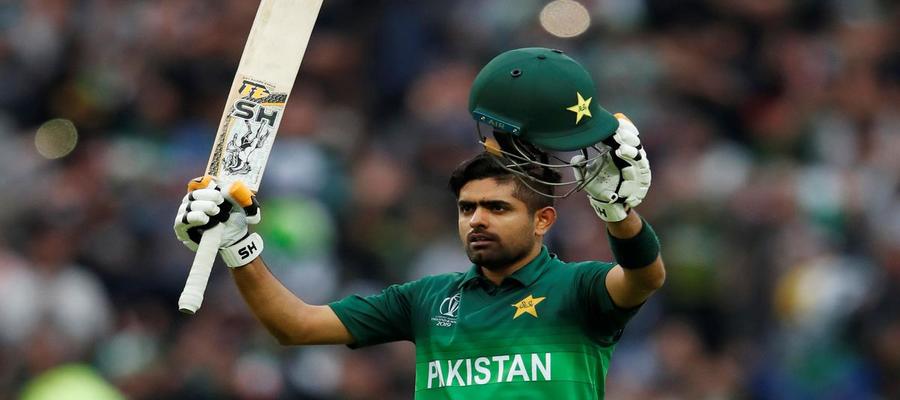Nature of Pakistani ODI cricket, absence of senior players in ODI setup, and the thirst to prolong his batting form is going to test Babar Azam as captain of Pakistan’s ODI cricket.
With the issue of new central contracts to its players, PCB has announced its new ODI and T20 captain: Babar Azam. This is a massive improvement in Babar’s career as he now holds the bridle of Pakistan cricket-an undisciplined horse.
Such a new addition to Babar’s rich profile as a leader of Pakistan in white-ball cricket has added a new responsibility to his already performance laden shoulders. His rich and soaring career as a lone worrier has now been adjoined with an extra charge of marshaling the Green troops. His captaincy brings certain questions with itself.
How is Babar as a Captain of Pak-XI?
It appears that Babar is the best choice for a captain, and most will agree, but who are the other options from which Babar has been picked? We may find no one tenable for such a job; Imad can be the one, but his place as an established all-rounder is transitory itself as Shadab’s ameliorated batting skills with his apt captaincy in PSL has come up as a breakthrough for the selectors, but in the bowling department, he is searching for a spin since the Champions Trophy 2017. Moreover, the rest of the other players have no cemented place in the team. Malik and Hafeez are on exit, Zaman is ready to be replaced by Sharjeel, once International cricket resumes. So, among the permanent dwellers of the ODI team, Babar’s place as a captain is more convincing. Thus, it becomes somehow evident that Babar’s captaincy is not by choice, but by default.
Will Babar be able to hold the ever-crumbling castle intact, and grout it?
Can Babar be it? Is he the type of captain who can set directives inside the field and control political arousal in the dressing room?
This question is surely in the minds of people. Babar has been a north star for youngsters and teammates, his batting is becoming the sole director of the Pakistani line-up. Luckily for Pakistan, his batting works by the expectations. But we can’t measure batting and captaincy in the same unit as both are different. Captaincy, unlike batting, is not an individual performance scheme; it is a personal planning effort by a person for all his team members.
Pakistan’s ODI cricket has inconsistent performance issues. It can breakdown anytime, anywhere; even on easy roads of chasing small totals. It can lose the path and fall apart like a house of cards. Bowling department which has been a sure pillar for most of our cricket has lost its vigor since Champion’s Trophy 2017. It lacks seasoned fast bowlers and a promising right-hand off-spinner. Leg spin too is in bad condition. Yasir shah is not an ODI material while Shadab is searching his spin for the last 2 years. In such frailty, accentuated by bowling fragility, pathetic results under Sarfraz’s captaincy; and a natural memory of unreliable batting, Pakistan ODI cricket is struggling. It needs good administration from a highly proactive and confident captain. So far, Babar has not shown any alert leadership glimpse as he has captained Pakistan only in three T20s. Only time will show us what skills he has inside his placid body language.
The absence of senior and experienced players is also another area of concern for Babar. He hardly will find any senior player at his side for the possible tour against England & South Africa in July and October respectively, this year. This would be challenging for Babar Azam. Luckily, Babar has a lot of time before he practically leads his side in ODIs. Moreover, the freshness of his appointment will not affect him; in fact, he may benefit from such time, as his senses will absorb the newness of the job, and will allow him to plan and develop contact with teammates as their captain.

What will be the impact of captaincy on Babar’s batting?
We already have a lens to answer this question. Let’s take examples of batsmen-turned-captains: Joe Root and Virat Kohli. Root is leading only in tests while Kohli in all three formats. Captaincy has changed their batting fates completely. Kohli has grown more in stature while Root’s batting has shrunk a lot due to captaincy. Kohli loves to take challenges and thus the challenge of captaincy has added to his batting brilliance, he now owns the whole team and plays for all of them. His pathetic batting form as a player in England (2014) transformed into batting genius when he visited as a captain in 2018. On the other hand, Root has lost his mettle after captaincy. The pressure of captaincy has permeated into his batting form, thereby, significantly reducing his batting average. He was averaging 52.2 by the time he started captaining the English side; to this date, he averages 42.80 in Tests. While Kohli averages 63.68 as a captain of the Indian test team. From these two cases, we can assume that things can go in any direction depending upon the credibility and temperament of an individual.
Babar’s batting-form as a captain and as a player is alike, till now. As a captain, he scored two fifties in three T20Is against Australia but three matches aren’t enough to crown him. No solid verdict can be given about Babar’s batting-form as a captain. Let the time decide. Till then we can only hope and wish him good luck for this new assignment.
- Is Baber Azam fit for captaincy? - 18 May 2020
- DOLPHIN AYAN; A TRAGEDY OF OUR SOCIAL FISSURE. - 4 May 2020


Very good analysis and especially comaprison of kohli and root.
thanks for the encouragement 🙂
Well, maturely elaborated statements in the light of Babar and his captaincy. It’s a better option to make Babar both T20 and ODI captain as both these formats are different from Test format. Though he will miss the experiences of senior players,as they play very effective role in supporting a youngster who is performing well,but there should have been someone for him to be guided well enough as he has to pass through different conditions and situations where decisions really matters. Anyhow he is a young gun and he can produce rapid fires;hope no restrictions are there for him behind the scene.
I really wish him best of luck but still he has to be careful about the environment of the dressing room and he has to make sure there are no groups developed against him within the same dressing room.
Thanks for the valuable feedback. 🙂